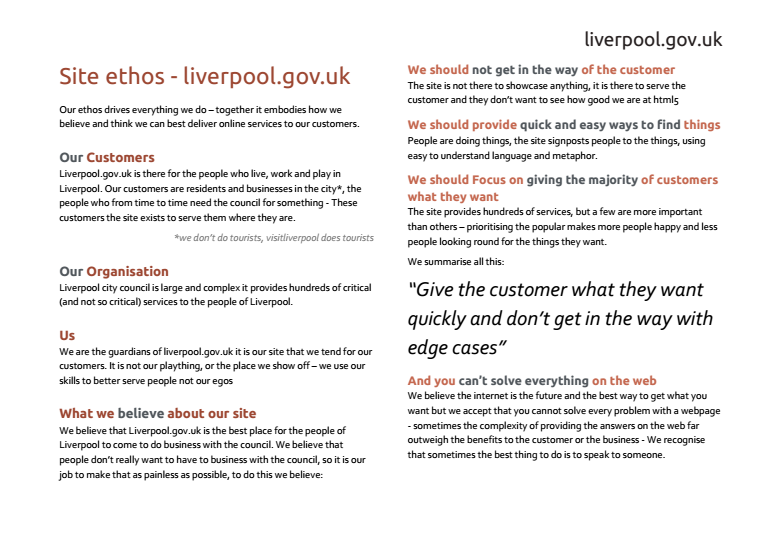Watch Simon Sinek talk about the Why:
Talk about the why
As Simon repeatedly says, ”People don’t buy what you do, they buy why you do it.” In all those hundreds of pages of strategy, governance and operational documents you’ve got for your project, how many of them talk about the What and the How, and how many of them talk about the Why?
Detailing the What and the How of a project is a very valid exercise. It’s not something you can skimp on. But if you don’t first talk about why you are doing something, then when the time comes to change the details, people aren’t going to be with you - and that’s when it can all come unstuck. In the absence of something bigger to focus on, people will care passionately about the detail. They will start asking why it’s different from the spec, why we’re getting behind, and why we are even doing this thing that no one mentioned at the beginning.
Talking about the Why is really getting down to the core of what you believe about the work you are doing. It’s about what you ultimately seek to achieve, who it will help, and how that drives you. These are the things about a project that don’t change, the anchor about which you can choose to change almost everything else.
Ethos
When working on projects, I try to bring these beliefs and behaviours into one place, and I call it our Ethos.

The site Ethos document above was produced for the redevelopment of liverpool.gov.uk, and it is a manifestation of everything the team working on it believed about the the project, the organisation, the site and, most importantly, its users. It set those things out clearly and concisely, and served as a one page introduction to why we were doing what we were doing. If everyone working on a project is “bought in” to why you are doing it, then as the project evolves and develops, they will be much more willing to evolve and develop with it.
Obviously, an Ethos cannot replace more concrete plans and strategies. Instead, it complements those things, offering guiding principles with which a good strategy could approach issues, and the actions to be put into place. You’ll always need a project plan to outline what is supposed to happen and when, but the Ethos liberates it from becoming the be-all and end-all in your project.
Next time: Ethos trickle-down - how we used our core ethos to build localised ethoses in each of the teams working on the site.